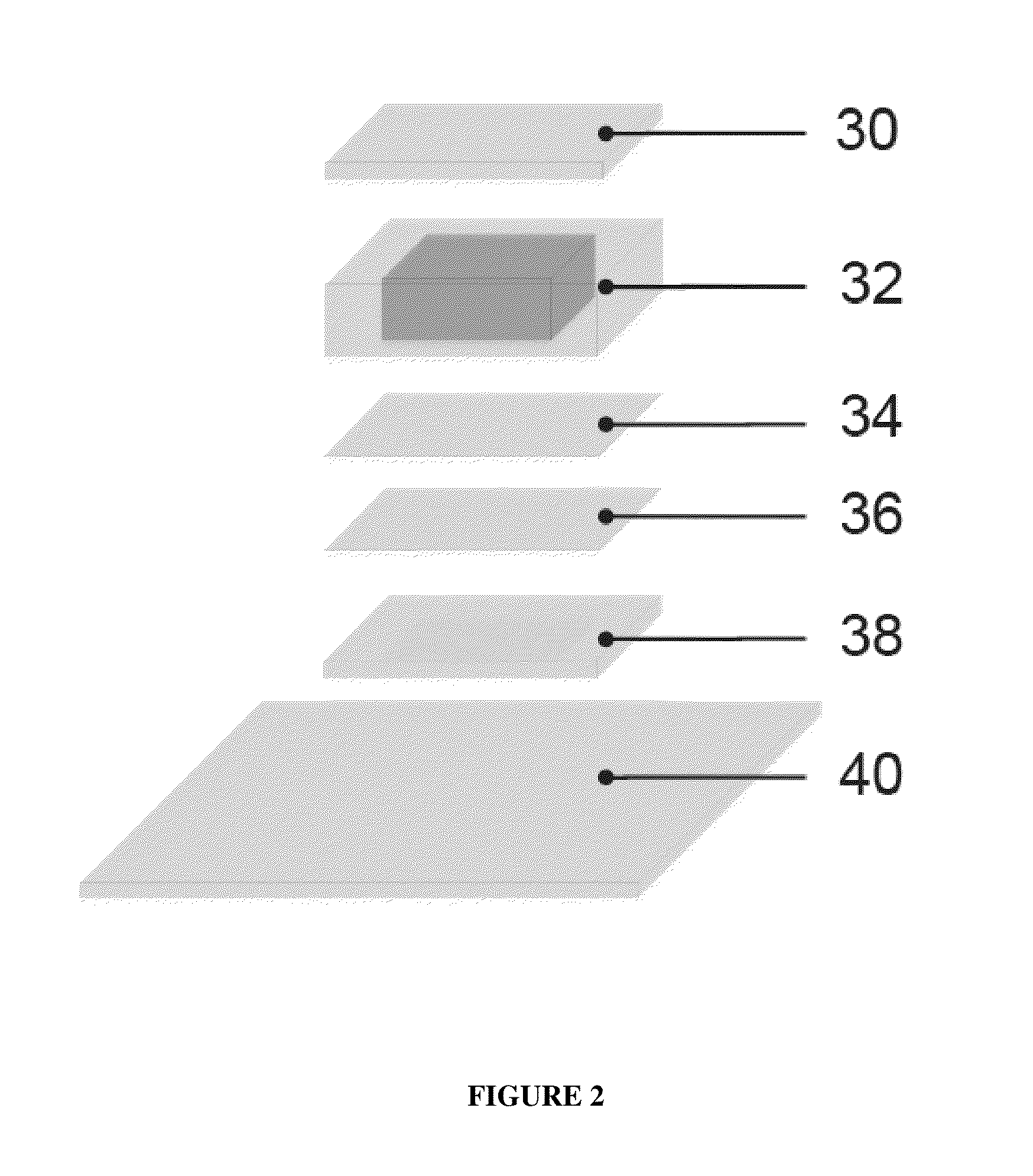System and method for microfluidic cell culture
a microfluidic and cell culture technology, applied in the field of microfluidic devices, can solve the problems of nonadherent cells, dehydration, and immobilization of nonadherent cells, and achieve the effect of promoting a particular seeding density
- Summary
- Abstract
- Description
- Claims
- Application Information
AI Technical Summary
Benefits of technology
Problems solved by technology
Method used
Image
Examples
example 1.1
Design of a Microfluidic Device for Suspension Cell Culture
[0275]Referring to FIG. 1, a schematic drawing of a microfluidic device according to one embodiment is shown generally at 10, with micrographs as insets. The microfluidice device 10 comprises an array of 1,600 chambers 12, each having a volume of 4.1 mL with integrated microvalves to allow precise control and exchange of media. The chambers 12 are connected by flow channels 14. Hydration lines 16 are located on each side of the array to minimize edge effects. Control lines consist of an isolation valve 18 and control lines (for example, a peristaltic pump) 20 to control cell loading and perfusion rates. Fluid can be introduced to the microfluidic device 10 through an array inlet 22 in order to access the flow channels 14 and chambers 12. Fluid may leave the device through an array outlet 24. Arrows point at single cells. The left scale bar represents 1 mm and the right scale bar represents 100 μm. Alternative embodiments cou...
example 1.2
Cell Immobilization
[0277]Various embodiments allow for perfusion of cells without disturbing cell position. This capability may be exploited for experiments requiring dynamic medium exchange or immunolabeling of the cells during or at the end of an experiment. This is particularly useful for suspension cells.
[0278]Referring to FIG. 3, one embodiment shows a microfluidic device is a non-perturbing microfluidic cell capture and retention mechanism that uses gravity to trap cells 50 in chambers with an inverted geometry with flow channels 14 running over the top and control lines 18. In the disclosed embodiment, the chambers 12 have cubic dimensions of 160 μm×160 μm×160 μm. However, larger (up to 1 mm×1 mm×1 mm) or smaller (down to 10 μm×10 μm×10 μm) could be used depending on the cell type and the intended application of the device. The chambers according to this embodiment have an aspect ratio of 1:1. However, chambers having an aspect ratio as low as 0.5 may be utilized to minimize ...
example 1.3
Culture of Hematopoietic Cells
[0285]Culture of Single Hematopoietic Cells in Microfluidic Cell Culture Arrays.
[0286]We tested the applicability of this microfluidic device to the study primitive hematopoietic cells. We first examined the growth of a preleukemic murine cells created by genetically engineering primitive adult mouse bone marrow cells to express a NUP98-HOXD13 (ND13) fusion gene9,10. Matched cultures of these “ND13” cells were set up in 24-well plates seeded at 150,000 cells / mL, 96-well plates seeded with single cells, and microfluidic cell culture arrays with or without the integrated iso-osmotic bath. In the presence of the iso-osmotic bath, the population doubling time averaged over all chambers loaded with single cells faithfully reproduced the bulk growth rate seen in the culture plates, indicating comparable conditions had been achieved. In addition, the average rates of expansion of the clones generated in the microfluidic chambers were equivalent to the average ...
PUM
| Property | Measurement | Unit |
|---|---|---|
| Volume | aaaaa | aaaaa |
| Time | aaaaa | aaaaa |
| Force | aaaaa | aaaaa |
Abstract
Description
Claims
Application Information
 Login to View More
Login to View More - R&D
- Intellectual Property
- Life Sciences
- Materials
- Tech Scout
- Unparalleled Data Quality
- Higher Quality Content
- 60% Fewer Hallucinations
Browse by: Latest US Patents, China's latest patents, Technical Efficacy Thesaurus, Application Domain, Technology Topic, Popular Technical Reports.
© 2025 PatSnap. All rights reserved.Legal|Privacy policy|Modern Slavery Act Transparency Statement|Sitemap|About US| Contact US: help@patsnap.com



